NCERC’s 20 YEARS of Impact

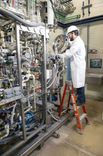
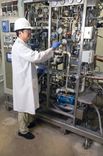

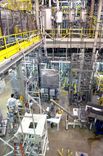

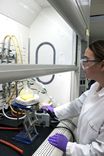
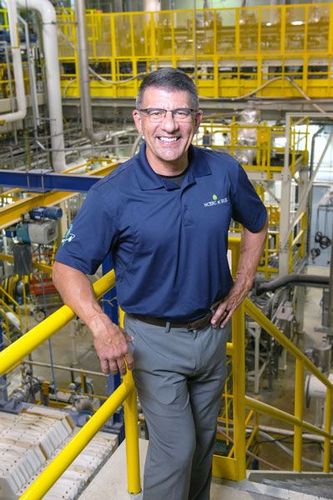
John Caupert, Executive Director at NCERC
July 14, 2023
BY Luke Geiver
The National Corn-to-Ethanol Research Center at Southern Illinois University-Edwardsville turns 20 this year. For two decades, NCERC has been a dependable outlet for entities ranging from multinational corporations to small startups looking to test, validate or improve a component of the ethanol production process. There are several milestone moments that have occurred since NCERC's inception. Hundreds of experts, researchers, tech developers, managers and other personnel across the ethanol industry are have ties to the center. And although NCERC has achieved a status within the industry that warrants a tribute that looks back at what it’s done, this moment doesn’t seem to be only about celebrating the past. As our conversation with John Caupert, executive director of NCERC for all but three years of its existence, shows, the facility’s 20-year anniversary is perhaps more about what NCERC is doing now, and how it can impact ethanol production and corn utilization in the future.
Part of Ethanol’s History and Future
NCERC is roughly 30 minutes from St. Louis. When the International Fuel Ethanol Workshop & Expo (the world’s largest gathering of ethanol producers) would take place in St. Louis, NCERC was almost always a featured stop on the event’s facility tours. Even today, industry professionals not only want to see the latest work being done there, but industry sponsors—companies that support NCERC—enjoy being onsite. At one time, the building may have been considered on-trend. Today, it serves its purpose. The link between industry sponsors/partners and the facility has always been healthy. NCERC receives a mix of state funding, federal dollars and payment from industry partners that use the resources offered in Edwardsville in exchange for a fee. Siemens and Shimadzu Corp., for example, are two major sponsors associated with NCERC and its continual quest to improve fermentation and research.
The facility employs roughly 30 to 40 full-time team members, with interns, guest researchers and others contributing at any given time. The fully-integrated facility has multiple bioreactors and can provide engineering design, method development, process control and automation, doing so with client confidentiality, intellectual property protection and commercialization services. For that, the team at NCERC provides project design, proof of concept, third-party validation and scale-up insight.
Through its fermentation lab, the team can evaluate potential fermentation products at 250mL and 5L. At its fermentation suite, pilot-scale bioreactors at 30, 150 and 1,500 liters are ready. A pilot plant includes four 22,000L anaerobic bioreactors. And, in the analytical lab, high quality data is collected and secured.
When talking with Caupert about what the center can do for the industry, and perhaps specifically fermentation, he says it should be more a question of what the center can’t do.
According to Caupert, in the early days the center did a tremendous amount of collaborative work with the USDA. They were looking at the possible yield of ethanol per bushel of corn. “We wanted to know how many gallons we could get, and we were primarily looking at the conversion of the endosperm or the starch portion of the kernel,” he says.
After that, came a focus on de-oiling of the kernel. They also used to talk a lot about the biorefinery concept. “Today we have a biorefining reality,” Caupert says.
Dry grind ethanol plants are now taking a kernel of corn and producing multiple value streams. That reality has altered some of the work done at the center. NCERC isn’t just about what its name implies. They do a lot more, from work on biorenewable polymers to municipal solid waste to ethanol processes.
The corn ethanol industry was 1.3 billion gallons when NCERC opened its doors. Today the industry is closer to 16 billion gallons. “We are still very true to our mission, which is to facilitate commercialization that can be used in the fuel ethanol space.”
Ethanol Research at Scale
There are many aspects of the center and its approach to ethanol research that are unique, but what stands out the most is its focus on scalability. According to Caupert, scalability is a driving force for his team of researchers and experts. The industry needs to operate at scale. There has to be a pathway or possibility of that, he says. “We take a deliberate approach to scale,” Caupert says.
When they start a project, they begin with bench-scale work and bench-scale fermentors. After they are satisfied with that step, they will move to piloting or intermediate fermentation that is 30L up to 1,500L.
“We spend a significant amount of time at intermediate-scale fermentation. Then, from there it's into the 22,000L bioreactors,” Caupert says.
Advertisement
Advertisement
At NCERC, when your project makes it to the 22k bioreactors, you are only a step away from the commercialization pathway. In some cases, NCERC has clients that come in with data already generated at their own facilities. They think they will be ready for the 22k bioreactors, Caupert explains. The team encourages them to relook at the early data. NCERC will, and often does. “If we can replicate what they have done, it is good to go.”
Most of the time, the work to validate the early data is actually credited back to the client, Caupert says. “We always find something in that early data.”
Roughly 90-percent of the time, the NCERC team discovers findings that are in favor of the client’s projects, usually associated with efficiency gains.
Reach Beyond R&D
You will be hard pressed to find a more passionate or well-spoken ethanol advocate than Caupert. He’s used that trait to help the center play a role in the ethanol industry’s place in the world of energy and politics.
“What I’ve learned in my time as executive director here is that we must as an industry continue to work—and work on the broadening and evolution of our base of friends and supporters,” he says.
NCERC is in a great place to educate others because of its prominence across the ethanol sector. Its depth of knowledge and history lend credibility to what the NCERC team says. Policymakers are looking for that. For example, the U.S. EPA frequently draws upon expertise from NCERC on the issue of corn kernel fiber to cellulosic ethanol.
Caupert points to Congress, for example, as another area where it could play a lobbying role. “Every election cycle there are fewer people from rural America who get elected. We have to constantly work to build and expand our base of support. I think you look no further than the U.S. Congress. We have to educate, motivate and inform those policy makers.”
It’s safe to say Caupert and crew are doing their part. Every year they meet with or host prominent farm groups, members of Congress or other interested parties that have well-known (or sometimes less known) positions on ethanol in the U.S. A recent rundown of meetings shows just how many people of varying backgrounds come into contact with the man with all that ethanol passion. They recently talked with Farm Credit of Illinois, SIUE staff senate, the St. Louis Agribusiness Club, delegates of the Midwest Biomanufacturing Summit, and a host of others.
Impact On Production
NCERC is not a national lab or affiliated with a federal agency. The tech that has come through the center runs the gamut, from A to Z, according to Caupert. Roughly 80 percent of the work done there is through client contracts.
“We might get two guys from San Diego working out of their garage,” he says. “And on the other end of the spectrum, we’ll work with multinational companies and big names in the fuel ethanol industry.”
The center never takes a position on any kind of product or technology. They don’t endorse either. “There is no perceived bias by anyone on a project or technology,” he says. “We will not compromise the scientific integrity of anything.”
Another thing NCERC doesn’t have to worry about is its reach into the ethanol industry. In 2015, Caupert commissioned a study to see what NCERC’s scope and impact in the industry truly was. The study (which Caupert plans to update soon) showed that of the 209 ethanol plants operating at the time, every plant was using at least one product or technology that had passed through the doors of the Southern Illinois center.
Advertisement
Advertisement
The reach of the center and its greatest impact is also about more than tech. It’s the people. Today there are more than 400 industry professionals that have received some form of hands-on, applied training from NCERC.
“Every single one of those 400 people is employed in the fuel ethanol industry,” Caupert says.
Some are in quality control. Some are sales managers. There is a big variety. For Caupert, it means he has a sales and recruiting team of 400-strong.
What Caupert envisions being most worth celebrating when his tenure at NCERC is over, he says, is the people.
“If I were to put together an alumni catalog it would be extensive,” he says. At times, that can be an issue. He is used to losing coworkers to outside ethanol companies. Everyone wants people from NCERC.
All those people, including Caupert, will continue to play a major role in the ethanol industry. They’ve had a great 20-years, but Caupert believes the success of NCERC is just getting started.
“When it comes to a low carbon future, I truly believe that ethanol and ethanol from corn is not only part of that solution,” he says, “I feel it is the solution.”
He believes NCERC and the greater industry has just scratched the surface and its capabilities.
“We don’t know the next innovation that is going to come about,” he says, “but it will come.” And based on its first 20 years, chances are NCERC will play a role in not just the next one or two industry breakthroughs, but countless innovations on the way.
Author: Luke Geiver
Contact: editor@bbiinternational.com
Printed in the August 2023 issue of Ethanol Producer Magazine
Related Stories
The U.S. EPA on July 8 hosted virtual public hearing to gather input on the agency’s recently released proposed rule to set 2026 and 2027 RFS RVOs. Members of the biofuel industry were among those to offer testimony during the event.
The USDA’s Risk Management Agency is implementing multiple changes to the Camelina pilot insurance program for the 2026 and succeeding crop years. The changes will expand coverage options and provide greater flexibility for producers.
EcoCeres Inc. has signed a multi-year agreement to supply British Airways with sustainable aviation fuel (SAF). The fuel will be produced from 100% waste-based biomass feedstock, such as used cooking oil (UCO).
President Trump on July 4 signed the “One Big Beautiful Bill Act.” The legislation extends and updates the 45Z credit and revives a tax credit benefiting small biodiesel producers but repeals several other bioenergy-related tax incentives.
CARB on June 27 announced amendments to the state’s LCFS regulations will take effect beginning on July 1. The amended regulations were approved by the agency in November 2024, but implementation was delayed due to regulatory clarity issues.
Upcoming Events










